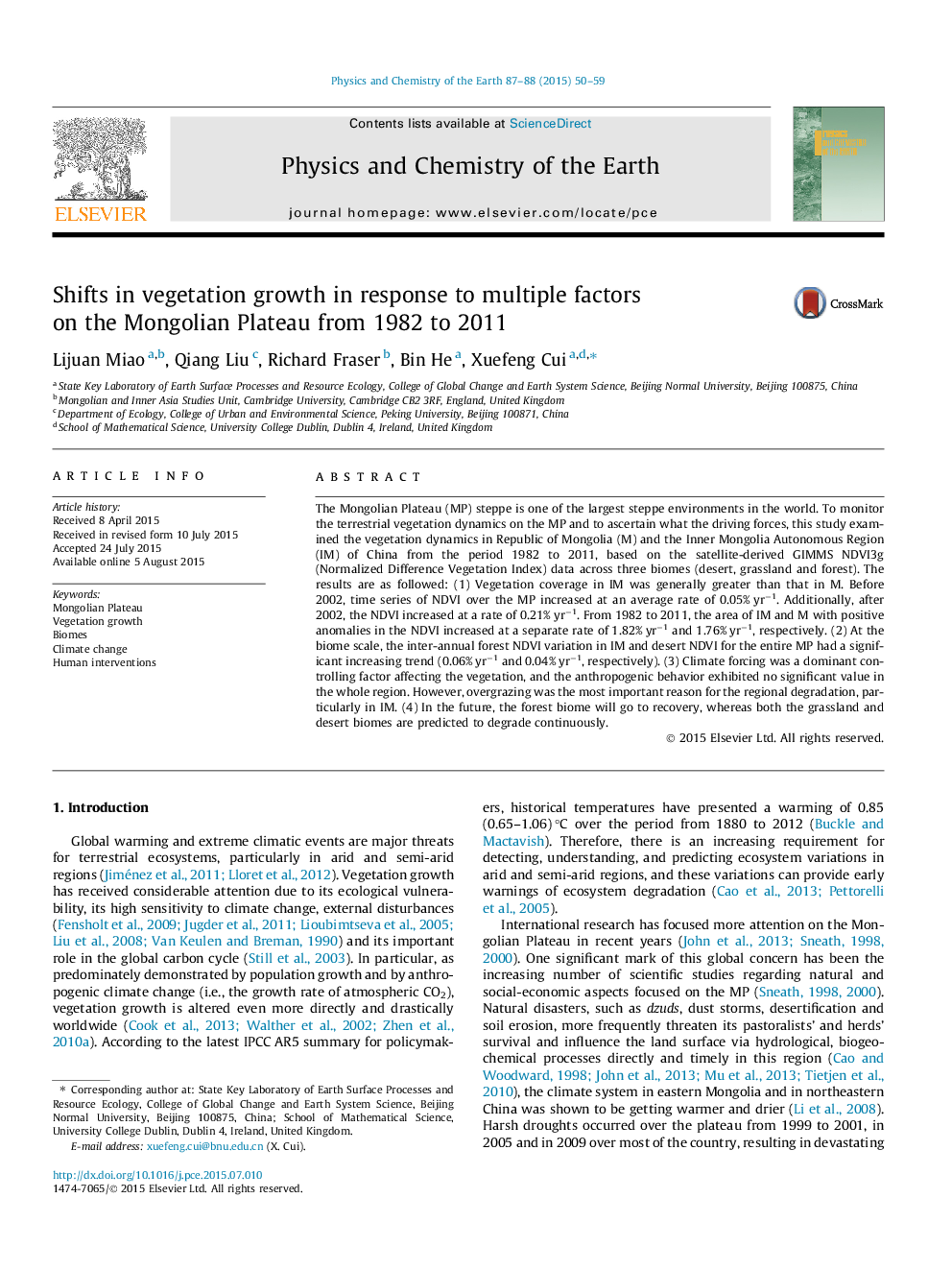| کد مقاله | کد نشریه | سال انتشار | مقاله انگلیسی | نسخه تمام متن |
|---|---|---|---|---|
| 4720910 | 1639349 | 2015 | 10 صفحه PDF | دانلود رایگان |
• A comparative study is shown between Mongolia and Inner Mongolia in vegetation trends.
• GIMMS NDVI3g is applied to examine the vegetation dynamics on the Mongolia Plateau.
• Human activities do not show a significant signal as it is weaker than climate change.
• Overgrazing was the most important reason for the regional degradation in IM.
• An increased area experiencing vegetation recovery in the future was forecasted.
The Mongolian Plateau (MP) steppe is one of the largest steppe environments in the world. To monitor the terrestrial vegetation dynamics on the MP and to ascertain what the driving forces, this study examined the vegetation dynamics in Republic of Mongolia (M) and the Inner Mongolia Autonomous Region (IM) of China from the period 1982 to 2011, based on the satellite-derived GIMMS NDVI3g (Normalized Difference Vegetation Index) data across three biomes (desert, grassland and forest). The results are as followed: (1) Vegetation coverage in IM was generally greater than that in M. Before 2002, time series of NDVI over the MP increased at an average rate of 0.05% yr−1. Additionally, after 2002, the NDVI increased at a rate of 0.21% yr−1. From 1982 to 2011, the area of IM and M with positive anomalies in the NDVI increased at a separate rate of 1.82% yr−1 and 1.76% yr−1, respectively. (2) At the biome scale, the inter-annual forest NDVI variation in IM and desert NDVI for the entire MP had a significant increasing trend (0.06% yr−1 and 0.04% yr−1, respectively). (3) Climate forcing was a dominant controlling factor affecting the vegetation, and the anthropogenic behavior exhibited no significant value in the whole region. However, overgrazing was the most important reason for the regional degradation, particularly in IM. (4) In the future, the forest biome will go to recovery, whereas both the grassland and desert biomes are predicted to degrade continuously.
Journal: Physics and Chemistry of the Earth, Parts A/B/C - Volumes 87–88, 2015, Pages 50–59
